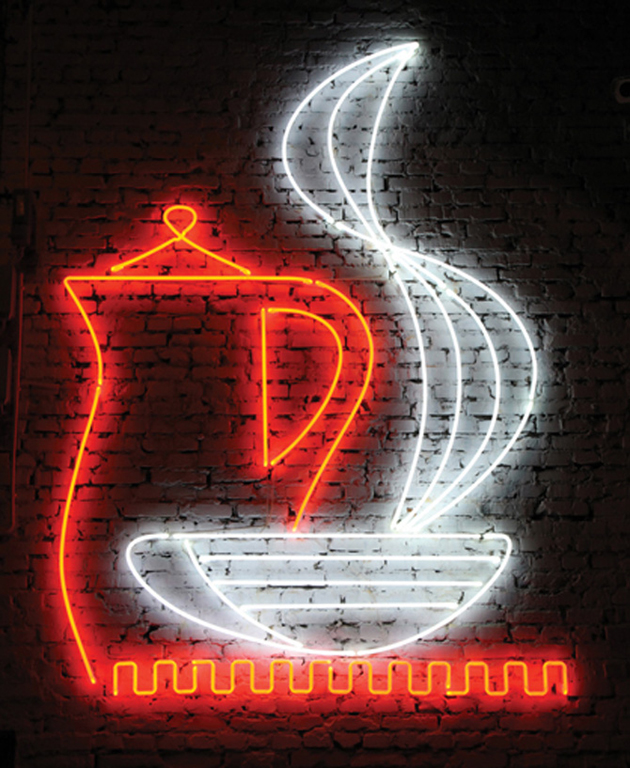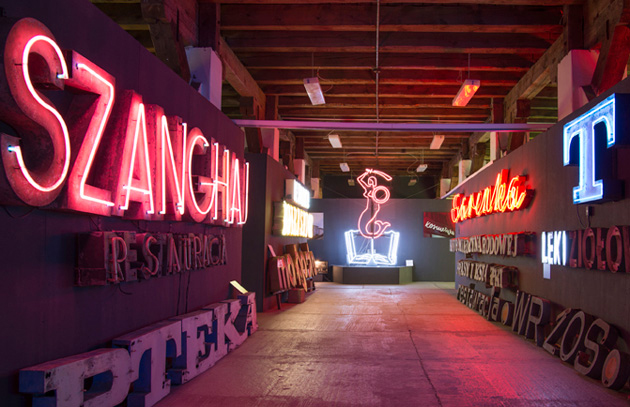
On the other side of the Iron Curtain, when communism ruled over the Eastern block and Poland was undergoing an unprecedented reconstruction through the rigour of Soviet architecture, the best artists and graphic designers of their generation found a unique way to warm up the hearts of post-war gloomy landscapes: transform neon lamps into the privileged means to create innovative and inspiring signs for public places.
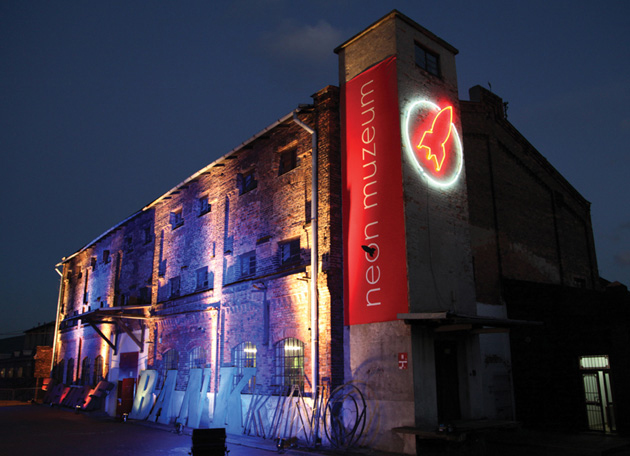
Neon signs weren’t a novelty in Europe. In Paris, the Champs-Elysees had already been illuminated by a huge Cinzano neon advertising sign in 1913, and right away the experiment was repeated in other cities. Nevertheless, no other country like Poland has ever transformed the potential of this tube and gas medium into a preponderant urban aesthetics. Restaurants, movie theatres, local milk bars, nothing escaped the contagion of neon lights. Even the most enduring symbol of the capital – the noble Warsaw’s mermaid – wasn’t kept out of the trend, demonstrating how much the city that had been wiped out by bombings needed an injection of warm, sexy and inspiring visual renewal.
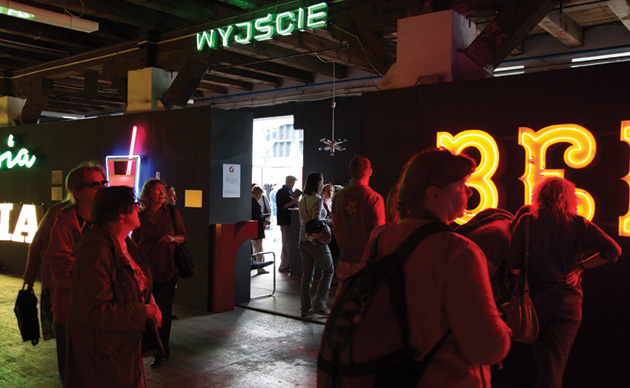
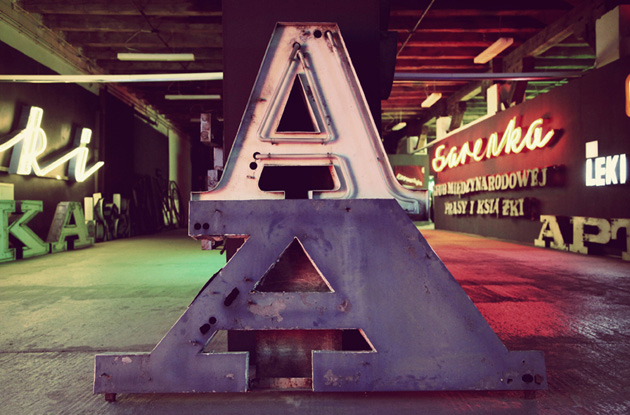
It’s a pity, then, that after the Wall’s fall this original language didn’t survive the impact with the Western world. Preserving this culture, then, has become the mission of the Neon Muzeum, a private institution founded in 2005 by David Hill and Ilona Karwinska to store the neons that were progressively dismantled in town. At the present time, the collection is made up of 50 neon pieces and 500 letterforms, which have all been restored, catalogued and promoted through an photographic exhibition by Ilona Karwinska that in the years have already touched several European cities.
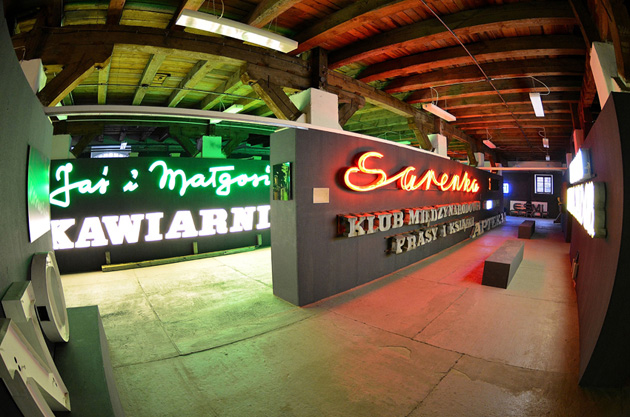
Based in the Prague neighbourhood, which is considered the most veracious among Warsaw’s districts, the Neon Muzeum has found its perfect environment in the so-called Soho Factory, a hub for creative talents founded on the ashes of an ancient power station. All around, design showrooms and studios – but also restaurants, food markets, fashion boutiques, etc… – are the most visible symptom of the city’s new energy, and recreate a contemporary landmark that spontaneously includes and relaunches this iconic heritage.
